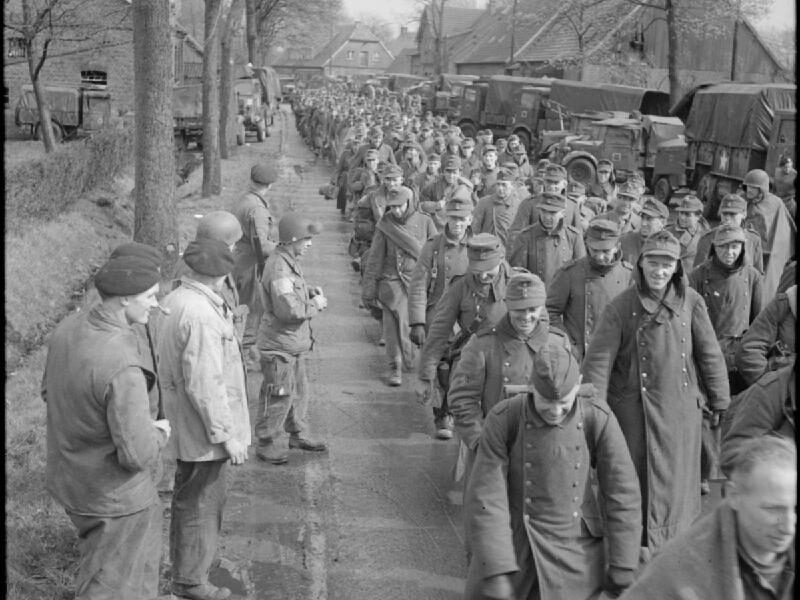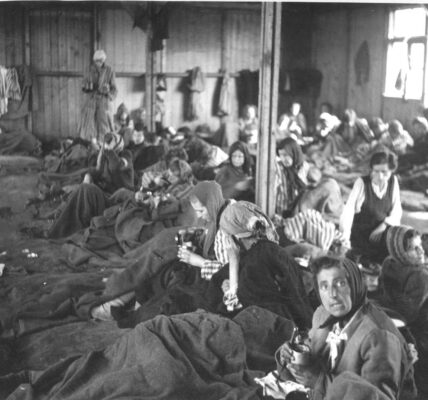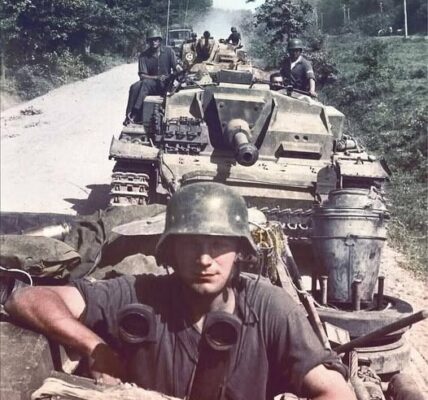End of a nightmare: Thousands of German soldiers march into captivity – Germany, 1945.

End of a nightmare: Thousands of German soldiers march into captivity – Germany, 1945
World War II was drawing to a close. It was spring 1945, and the once-mighty Third Reich was crumbling under the relentless pressure of the Allied forces. German cities lay in ruins, the front had collapsed, and millions of soldiers had been forced to surrender. This striking colorized photograph depicts one such moment: hundreds, if not thousands, of German soldiers marching into an uncertain future—as prisoners of war of the Allies.

The scene takes place somewhere in northwestern Germany. British soldiers in uniforms with typical berets watch the passing columns of German prisoners. The road is lined with military vehicles, British trucks, and in the background, red brick houses can be seen – typical of many German villages of that time. It is a picture of transition: from military pride to total collapse.
The men marching here wear heavy coats, worn uniforms, some with improvised headgear. Their faces reflect exhaustion, resignation, but also relief. For many, captivity meant not just surrender – but survival. The alternative was certain death at the front or from the bombing raids in the cities.

In the final months of the war, masses of German soldiers were taken prisoner by the Allies. The Western Allies—especially the Americans and British—established large prisoner-of-war camps in France, Belgium, and on German soil. It was the largest mass internment in European history. By the end of 1945, more than 11 million German soldiers were prisoners of war. Many of them would not return home for years—if at all.
Conditions in the camps varied considerably. While British prisoner-of-war camps were relatively organized and largely complied with the Geneva Conventions, the situation in French or Soviet camps was often much harsher. Soviet captivity, in particular, was considered brutal – only about a third of the German soldiers who fell into Soviet hands survived.
But at that moment in the photograph, all of that was still uncertain. The men didn’t know where they were being taken, how long they would stay, or whether they would ever see their families again. For many, it was the end of a long journey—perhaps they had fought for years on the Eastern Front, in Italy, or in France. Now they marched in silent columns, past British soldiers whose expressions wavered between indifference and pity.
This photograph conveys more than just a historical event – it shows the moment of utter defeat. But it also shows the beginning of something new: peace. For Europe, for Germany, and for the men in the picture. The weapons had been silenced. The din of battle had subsided. Now only marching boots remained, echoing on wet asphalt.
The story behind this image is also a reminder of how many young men – on both sides – fell victim to an ideologically driven war. Many of them had no choice; they were drafted, sent to the front, and plunged into a spiral of violence, suffering, and death. Their defeat meant the end of National Socialism, but also the end of their youth, their illusions, and often their health.
Today we look at such images with mixed feelings: pity, horror, and reflection. But they also fulfill an important function. They remind us not to forget history. And they remind us that peace is never a given – but must be defended anew every day.










